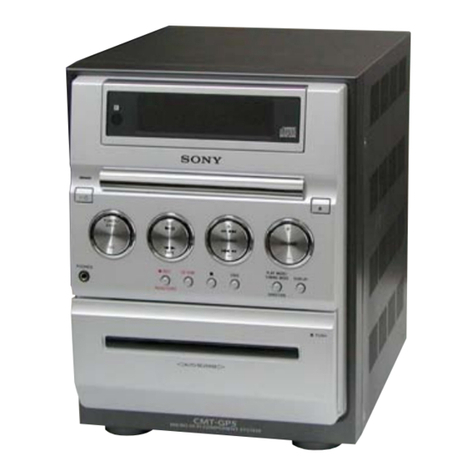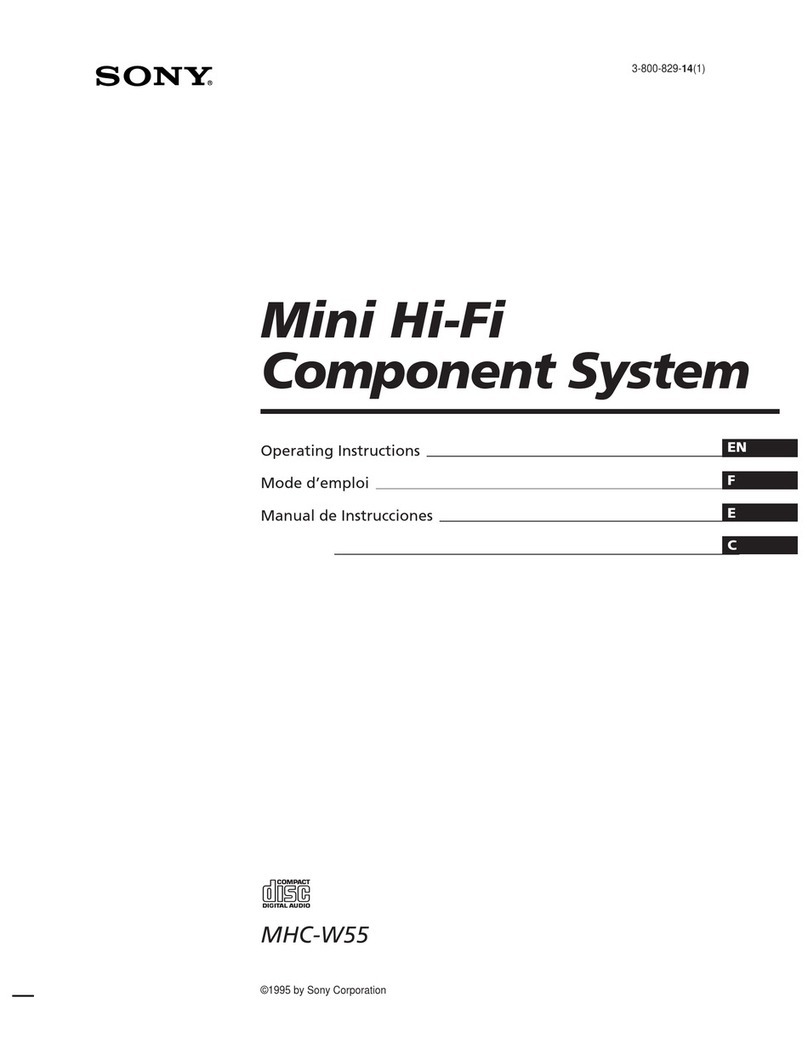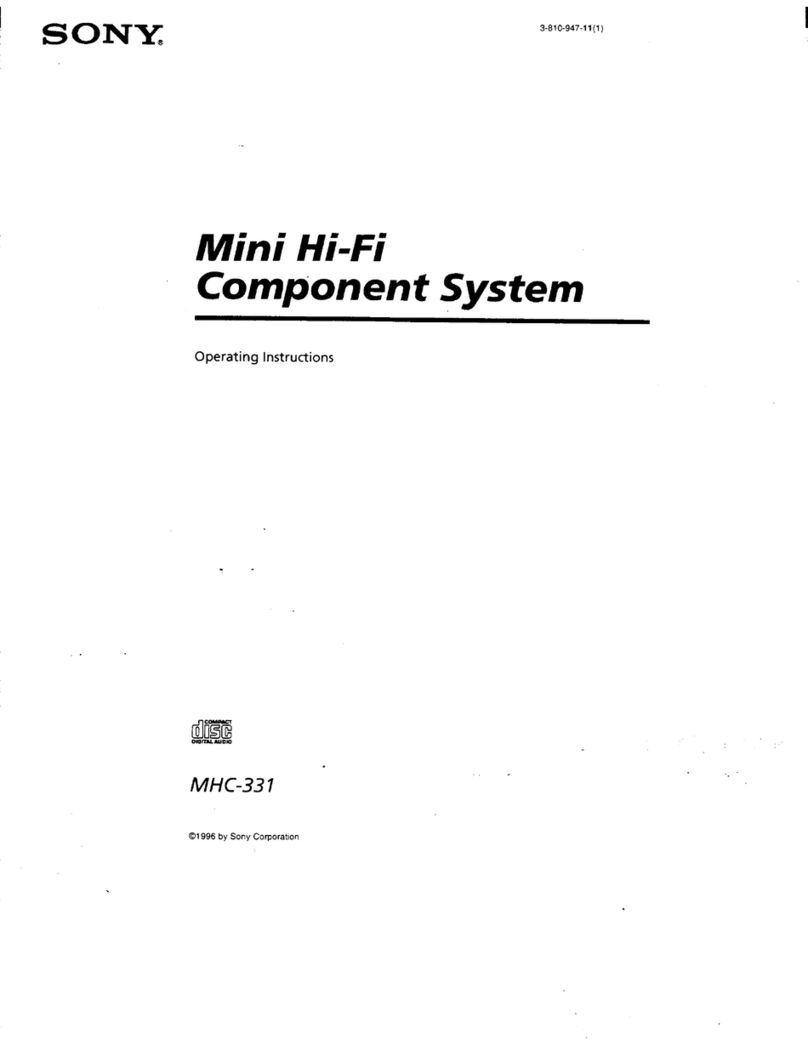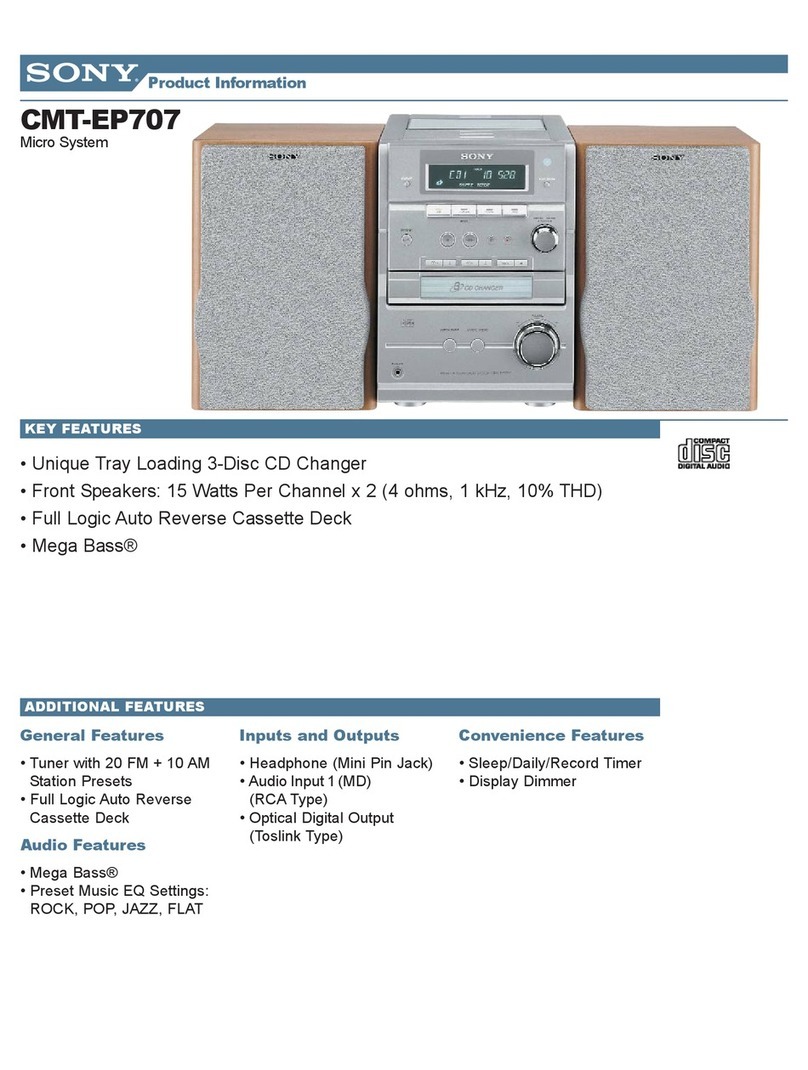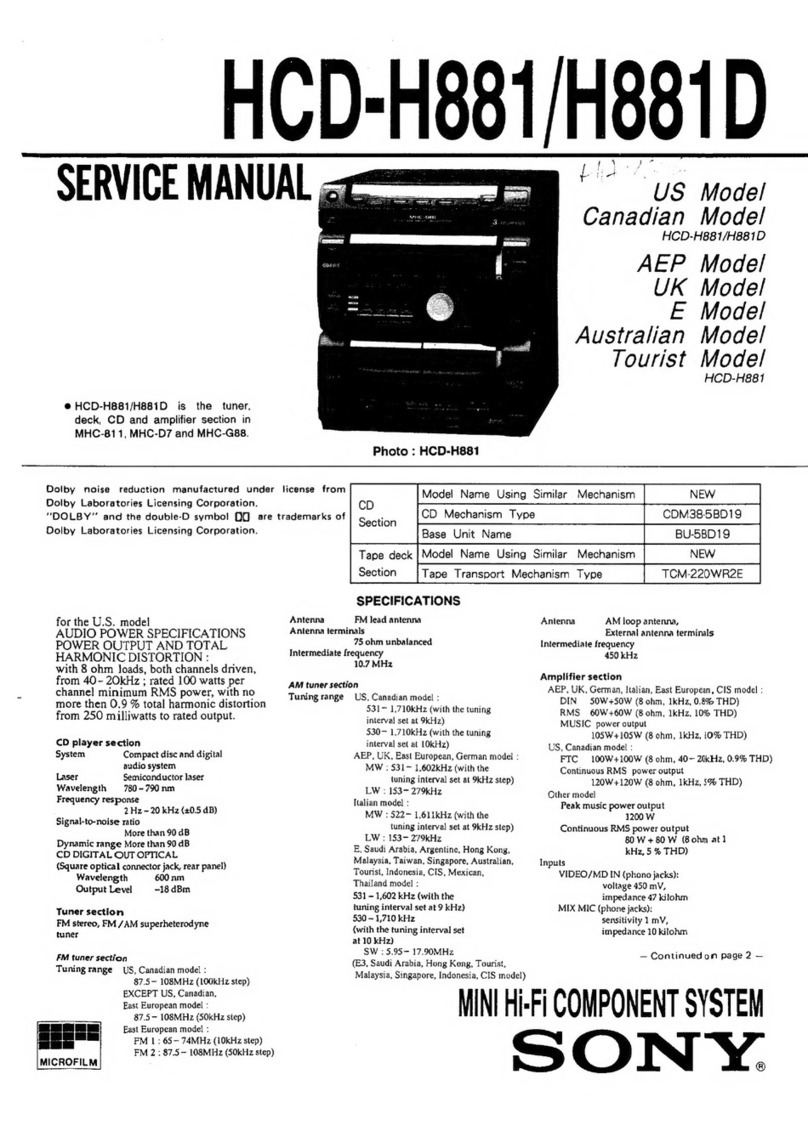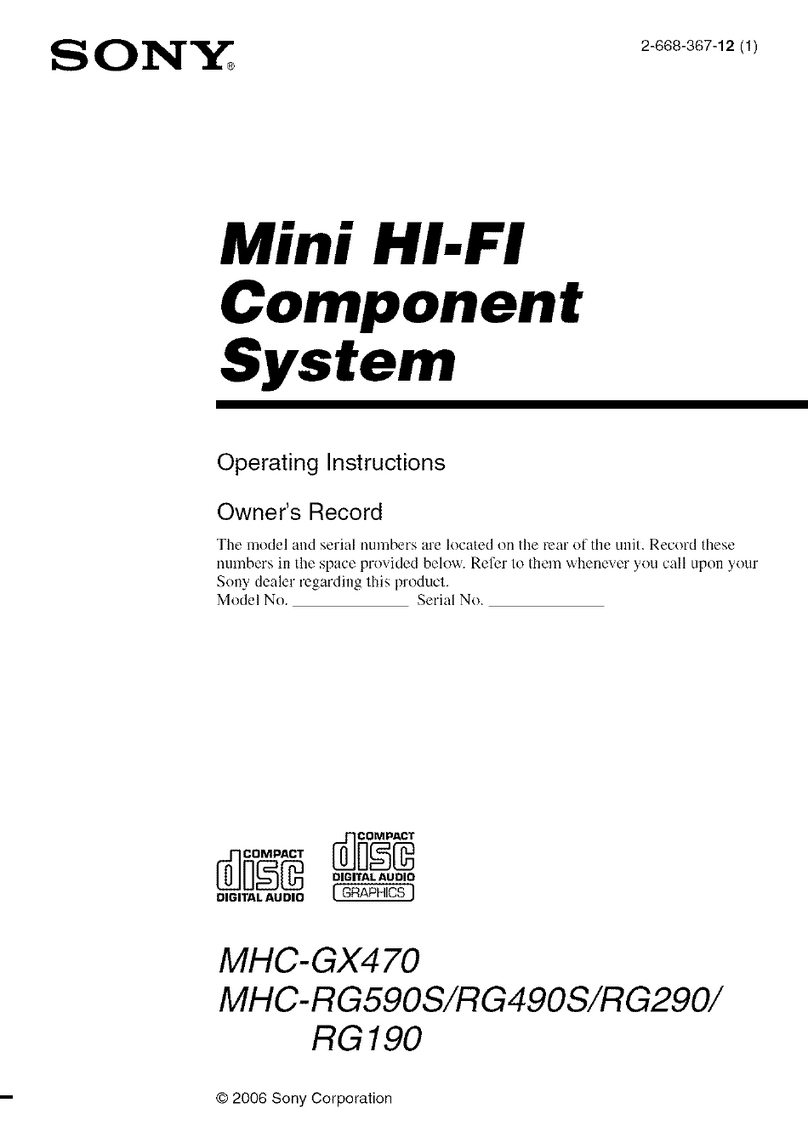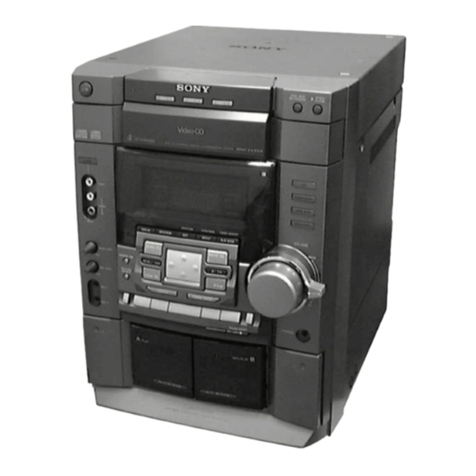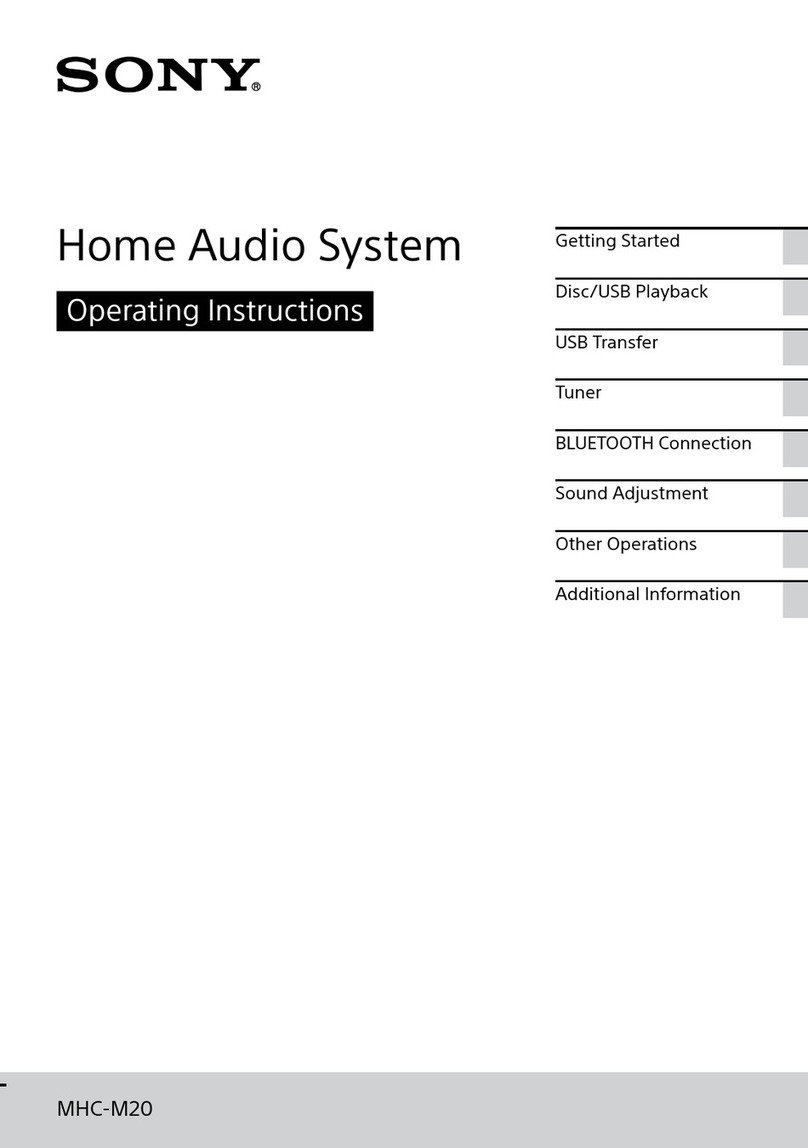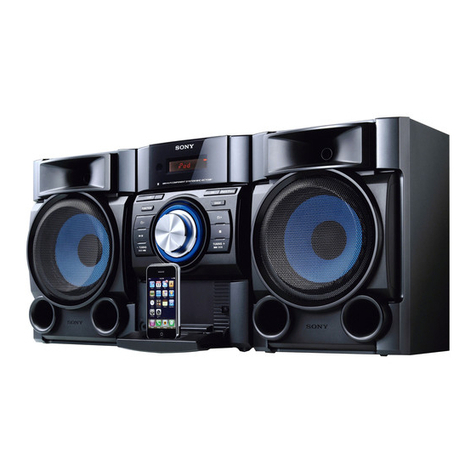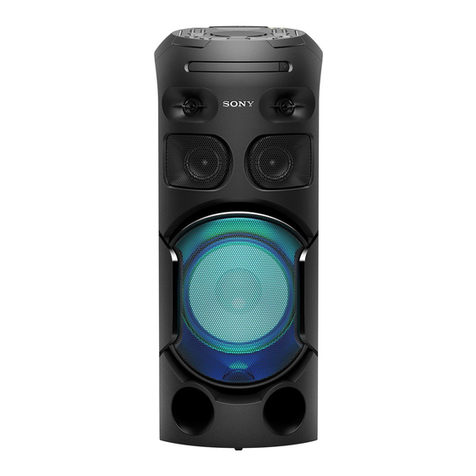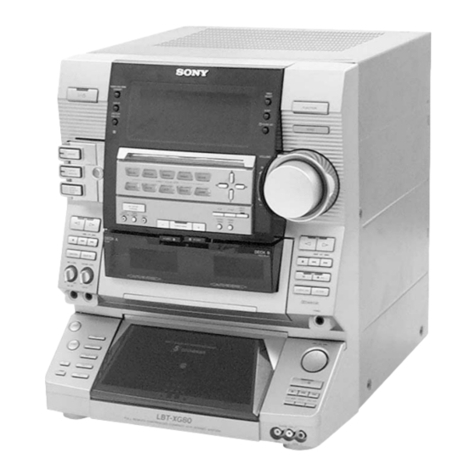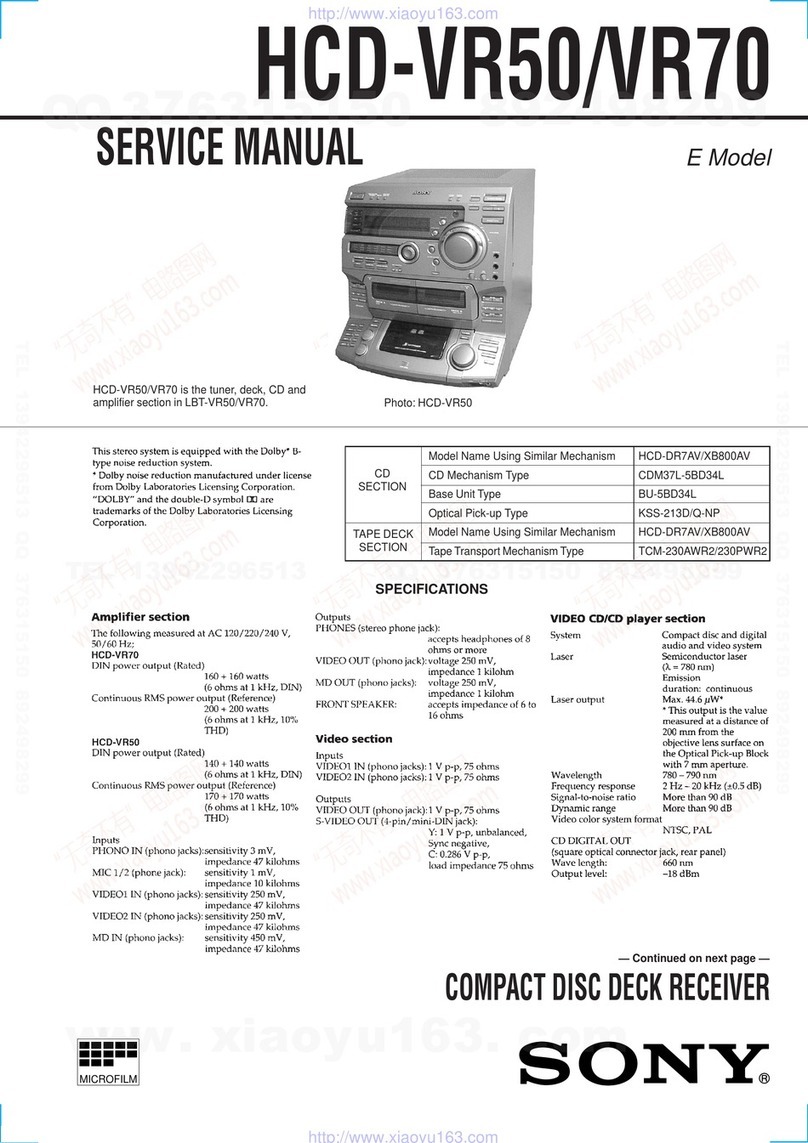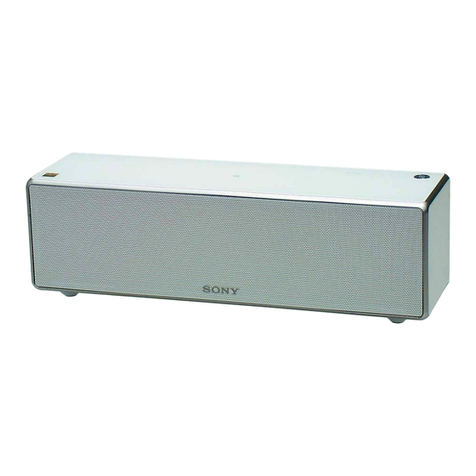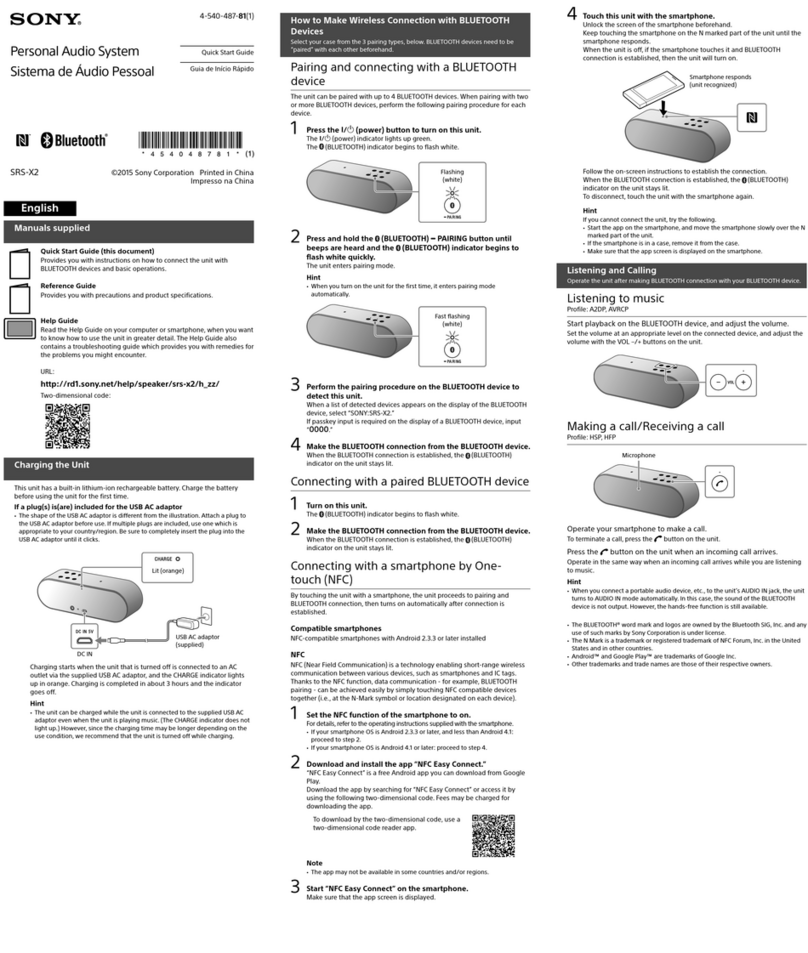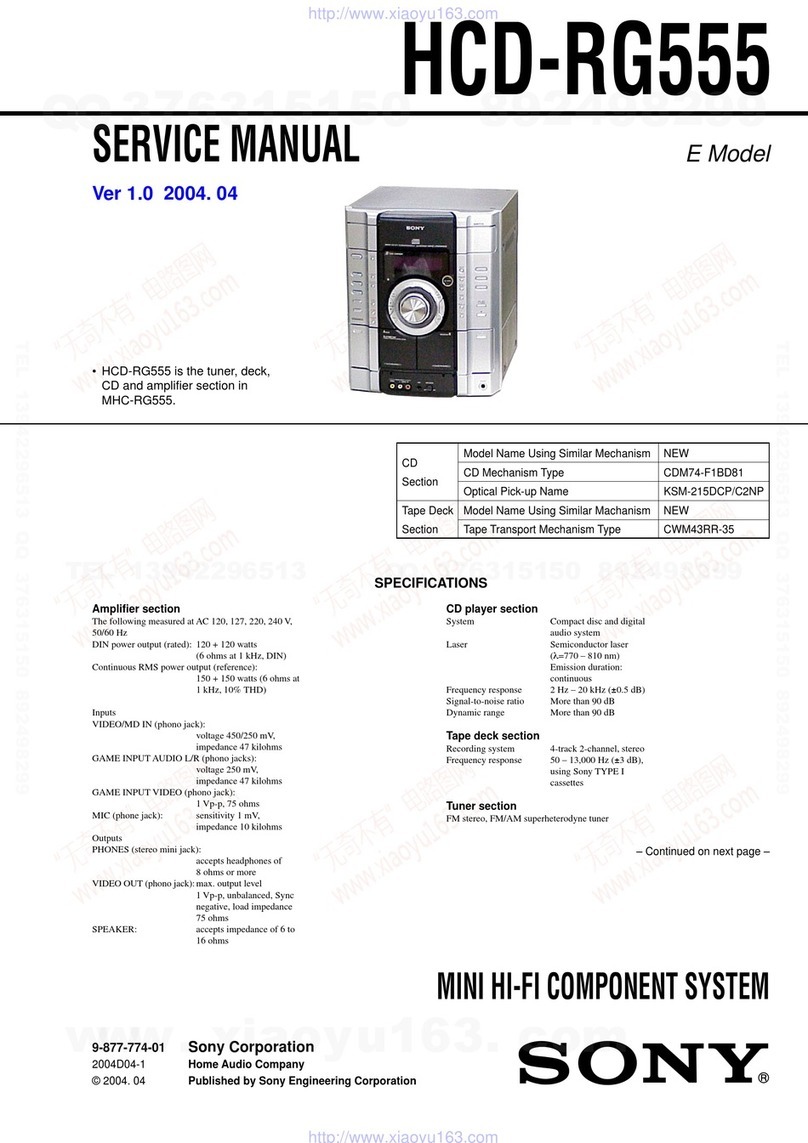– 3 –
1. SERVICING NOTES ............................................... 3
2. GENERAL
Location of Controls ....................................................... 6
Setting the Time .............................................................. 7
3. DISASSEMBLY ......................................................... 8
4. TEST MODE.............................................................. 11
5. MECHANICAL ADJUSTMENTS....................... 14
6. ELECTRICAL ADJUSTMENTS
DECK Section ................................................................. 14
CD Section ...................................................................... 17
7. DIAGRAMS
7-1. Block Diagram – CD SERVO Section – ........................ 19
7-2. Block Diagram – TAPE DECK Section – ...................... 21
7-3. Block Diagram – MAIN Section – ................................. 23
7-4. Block Diagram – DISPLAY/KEY CONTROL/
POWER SUPPLY Section – ........................................... 25
7-5. Note for Printed Wiring Boards and
Schematic Diagrams ....................................................... 27
7-6. Printed Wiring Board – BD Board – .............................. 29
7-7. Schematic Diagram – BD Board – ................................ 31
7-8. Printed Wiring Boards – CD MOTOR Section – .......... 33
7-9. Schematic Diagram – CD MOTOR Section – .............. 35
7-10. Printed Wiring Board –AUDIO Board – ...................... 37
7-11. Schematic Diagram – AUDIO Board – ......................... 39
7-12. Printed Wiring Board – LEAF SW Board –.................. 41
7-13. Schematic Diagram – LEAF SW Board –..................... 41
7-14. Printed Wiring Board – MAIN Board – ........................ 43
7-15. Schematic Diagram – MAIN Board (1/4) – ................. 45
7-16. Schematic Diagram – MAIN Board (2/4) – .................. 47
7-17. Schematic Diagram – MAIN Board (3/4) – .................. 49
7-18. Schematic Diagram – MAIN Board (4/4) – .................. 51
7-19. Printed Wiring Board – PANEL Board – ...................... 53
7-20. Schematic Diagram – PANEL Board – ......................... 55
7-21. Printed Wiring Board – CD SW Board – ...................... 57
7-22. Schematic Diagram – CD SW Board – ......................... 58
7-23. Printed Wiring Boards
– TRANSFORMER Section – ........................................ 61
7-24. Schematic Diagram
– TRANSFORMER Section – ........................................ 63
7-25. IC Pin Function Description ........................................... 67
8. EXPLODED VIEWS ................................................ 73
9. ELECTRICAL PARTS LIST ............................... 82
TABLE OF CONTENTS
The laser diode in the optical pick-up block may suffer electro-
static break-down because of the potential difference generated
by the charged electrostatic load, etc. on clothing and the human
body.
During repair, pay attention to electrostatic break-down and also
use the procedure in the printed matter which is included in the
repair parts.
The flexible board is easily damaged and should be handled with
care.
NOTES ON LASER DIODE EMISSION CHECK
The laser beam on this model is concentrated so as to be focused
on the disc reflective surface by the objective lens in the optical
pick-up block. Therefore, when checking the laser diode emis-
sion, observe from more than 30 cm away from the objective lens.
Notes on chip component replacement
• Never reuse a disconnected chip component.
• Notice that the minus side of a tantalum capacitor may be dam-
aged by heat.
Flexible Circuit Board Repairing
• Keep the temperature of the soldering iron around 270 ˚C dur-
ing repairing.
• Do not touch the soldering iron on the same conductor of the
circuit board (within 3 times).
• Be careful not to apply force on the conductor when soldering
or unsoldering.
NOTES ON HANDLING THE OPTICAL PICK-UP
BLOCK OR BASE UNIT
CAUTION
Use of controls or adjustments or performance of procedures
other than those specified herein may result in hazardous ra-
diation exposure.
This appliance is classified as a CLASS 1 LASER product.
The CLASS 1 LASER PRODUCT MARKING is located on
the rear exterior.
Laser component in this product is capable of emitting radiation
exceeding the limit for Class 1.
The following caution label is located inside the unit.
CAUTION : INVISIBLE LASER RADIATION WHEN OPEN AND
INTERLOCKS DEFEATED. AVOID EXPOSURE TO BEAM.
ADVARSEL : USYNLIG LASERSTRÅLING VED ÅBNING NÅR
SIKKERHEDSAFBRYDERE ER UDE AF FUNKTION. UNDGÅ UDSAETTELSE
FOR STRÅLING.
VORSICHT : UNSICHTBARE LASERSTRAHLUNG, WENN
ABDECKUNG GEÖFFNET UND SICHEREITSVERRIEGELUNG
ÜBERBRÜCKT. NICHT DEM STRAHL AUSSETZEN.
VARO
!
:AVATTAESSA JA SUOJALUKITUS OHITETTAESSA OLET ALT-
TIINA NÄKYMÄTTÖMÄLLE LASERSÄTEILYLLE. ÄLÄ KATSO SÄTEESEEN.
VARNING : OSYNLING LASERSTRÅLING NÄR DENNA DEL ÄR ÖPPNAD
OCH SPÄRREN ÄR URKOPPLAD.BETRAKTA EJ STRÅLEN.
ADVERSEL : USYNLIG LASERSTRÅLING NÅR DEKSEL ÅPNES OG
SIKKERHEDSLÅS BRYTES. UNNGÅ EKSPONERING FOR STRÅLEN.
VIGYAZAT
!
:A BURKOLAT NYITÁSAKOR LÁTHATATLAN LÉZERSU-
GÁRVESZÉLY
!
KERÜLJE A BESUGÁRZÁST
!
SECTION 1
SERVICING NOTES
